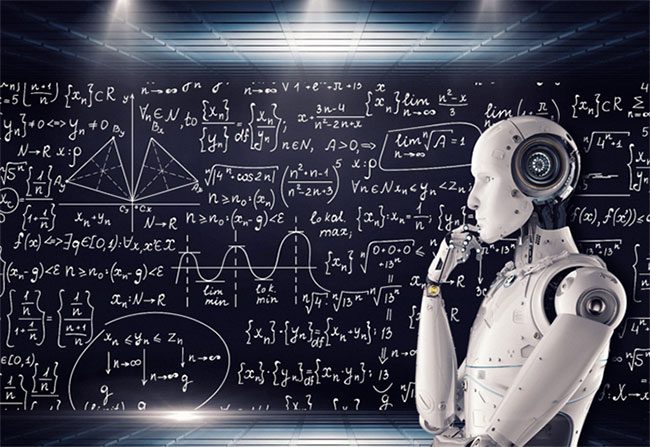Chinese researchers have developed a new method to train machines, hoping that this model can help create “AI scientists.”
Chinese scientists report that they have discovered a way to improve machine training methods using available knowledge (such as physical laws, logic, and mathematics), aiming to create “AI scientists” capable of conducting experiments and solving scientific problems.
Specifically, according to a paper published by Chinese researchers in the journal Cell Press Nexus, deep learning models have “revolutionized the field of scientific research” due to their ability to uncover relationships within vast amounts of data. However, machine models lack a fundamental understanding of the world, leading to less accurate outcomes.
To address this issue, machine models need to incorporate additional human knowledge. The challenge is that inputting too much knowledge at once can cause the model to malfunction. Therefore, the Chinese researchers developed evaluation rules to allow machines to self-select and incorporate the most relevant knowledge alongside the data.

China aims to create “AI scientists” capable of conducting experiments and solving scientific issues. (Illustrative image: TDS).
One example mentioned is Sora – a model that converts text descriptions into video developed by OpenAI (USA). The developers of Sora claim it can “understand how everything exists in the real world” and has the capability to describe objects in an advanced, realistic manner.
However, the company admits that Sora still struggles to simulate certain aspects of the real world and cannot “accurately model the physical characteristics of many fundamental phenomena.”
In practice, the company only “trains” Sora using a large amount of image data, allowing this artificial intelligence to self-select from a data pool of realistic images and videos. They have not yet been able to help Sora understand physical laws like gravity.
Chen Yuntian, a co-author of the study and a professor at the Eastern Institute of Technology (EIT), stated: “Without a basic understanding of the world, a machine model is essentially just replicating data, not describing it.”
Xu Hao, another co-author of the research from Peking University, commented: “Incorporating human knowledge into AI models has the potential to improve their effectiveness and reasoning capabilities. The question is how to balance the influence of data and knowledge.”
According to the paper, the new method helps calculate <em“the significance of rules, considering the impact of a specific rule on a machine model’s predictions. Subsequently, AI will be taught the most relevant rules—such as physical laws—which yield results “more consistent with the real world.”
The researchers tested this method by applying it to optimize a model that solves multivariable mathematical equations, as well as a model predicting outcomes of chemical experiments.
Chen noted that in the short term, this method will be very useful for machine models that require consistency with physical laws.
The research team also discovered some existing issues. For instance, after adding more data to the model, general rules would be prioritized over specific rules. In certain specialized fields requiring consideration of multiple factors—such as biology and chemistry—this could impact the results.
Nevertheless, the team hopes that this new method will further develop machine learning models, enabling AI to gradually identify its own knowledge and rules without human intervention.
“We want to turn this into a closed-loop process, thereby transforming the model into a true AI scientist,” the team stated.
The researchers are also developing open-source tools for AI developers so they can conduct similar experiments.


















































